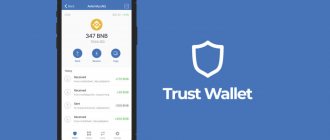This guide is intended for Bitcoin core wallet (Bitcoin-QT) users who want to securely transfer their Bitcoins from their wallet.dat backup file to an alternative wallet. Specifically in the Electrum wallet.
If you don't want to wait for the initial wallet synchronization, which usually takes from a few hours to a few days, depending on the hardware specifications, then this guide is for you.
If you want to import wallet.dat file into Electrum or any other wallet, then this guide is for you. Here we explain how to move/transfer coins from QT wallet to Electrum.
READ
Recovering an Electrum wallet using seed and some basic tips
Now, before we walk you through how to download the wallet.dat file and import everything into Electrum, let's understand why someone would consider transferring Bitcoins from their main wallet to Electrum.
Why is Electrum better than the main wallet?
Bitcoin-QT is the official and original Bitcoin wallet. It is a full node client that validates and forwards transactions on the Bitcoin network. This wallet offers you complete control over your Bitcoin and provides the highest level of security. But there are also disadvantages.
One of the main reasons why users prefer Electrum over a basic wallet is that the QT client is slow.
You cannot download a wallet and use it immediately. You need to wait for the wallet to sync with the blockchain. The problem is that most hodlers don't open their wallet for weeks, months or even years. As a result, when they open the wallet again, they will have to wait several hours or even a whole day before they can use Bitcoin-QT.
If your main wallet freezes and does not sync, then you can try rescanning, re-indexing the wallet. This may fix the problem.
But even after fixing wallet sync issues, there are some bad situations, such as your computer may crash and corrupt the blockchain files on your hard drive. In this case, you will have to reinstall the main wallet, re-download and verify the entire blockchain from scratch, which is more than 300 GB in size.
READ
Ledger Nano not detected on Electrum / connection error: how to fix
To speed up synchronization, you can use the bootstrap.dat file. But most users do not use this either, since the wallet still consumes too much disk space.
Well, you can think about pruning the blockchain. But even in this mode, it is necessary to download the entire blockchain, consuming enormous bandwidth. Trimming only reduces the amount of space you take up on your hard drive.
Recovering deleted wallets
Your wallet could have been deleted in several ways:
Remote wallet software
If you uninstalled Bitcoin Core, your wallet is still on your computer. Just go to your Bitcoin Core data directory:
Windows:
%APPDATA%\Bitcoin
MAC:
~/Library/Application Support/Bitcoin/
Electrum
Compared to the main wallet, Electrum has a lower level of security, but this wallet is lightweight and starts up much faster.
Another reason to choose Electrum is that it is an HD wallet that offers the ability to backup/restore all your keys. For this you only need a seed phrase.
When you initially set up your wallet, the program will generate a mnemonic seed phrase for you, which usually consists of 12 random words. All you need to do is write it down and keep it in a safe place.
In case your computer crashes or you want to migrate, you can enter the seed phase and completely restore the wallet.
You won't get this benefit with the main wallet because the main wallet stores all private keys in the wallet.dat file and you need to back up this file.
The problem is that only the main wallet supports the wallet.dat file, so you cannot use this file anywhere other than the main wallet (Bitcoin-QT).
So how do you import your wallet.dat file into Electrum and transfer your Bitcoins there?
What is a cryptocurrency wallet
Fundamentally, a cryptocurrency wallet is a set of keys for accessing your money. Keys, in turn, are divided into public and private. For a more complete understanding, imagine that your cryptocurrency wallet is the same as your mailbox in the entrance, well, not exactly the same, but made of super strong armor and sewn with steel cables so that it cannot be unscrewed :) The mailbox has a hole for incoming mail mail, where anyone can come and send you any message. In order to come and put a message in it (send you coins), another person must know the address of the box (public key). But in order to open the box and take the message from it, that is, your coins, you must have a key to the lock, that is, a private key.
Thus, having a private key to your address where your coins are stored, you will ALWAYS be able to restore them, no matter what happens. The opposite is also true; if your private key becomes known to another person who understands what it is, he can easily take over your money.
From all this the question arises, how to manage these keys and send transactions to the blockchain? This is where the technical understanding of the wallet arises, which is true for most users. A wallet is a program that helps us manage keys and make transactions with our coins.
How to import wallet.dat file into Electrum?
There is no way to restore your old Bitcoin-QT wallet on Electrum using a .dat file. You cannot import a wallet.dat file into an Electrum wallet because Electrum does not support this file type.
As we already said, the wallet.dat file cannot be imported anywhere other than the main wallet.
So, the best way to transfer your Bitcoins from your main wallet to Electrum is to send the coins to an address in your Electrum wallet. This way, your coins will be protected by the seed phrase generated by Electrum.
But the problem of wallet synchronization remains. You cannot send coins until you complete the sync. So, how to transfer Bitcoins from wallet.dat file?
READ
How to backup wallet.dat wallet and transfer it to another computer
Although Electrum does not support wallet.dat files, it does support importing private keys. Using private keys, you can either import or use a cleanup operation.
The private keys are stored in the wallet.dat file and you need to obtain them to transfer Bitcoins from your main wallet to Electrum.
Unfortunately, in order to export private keys, you need to run Bitcoin core (Bitcoin-QT) again using the original wallet.dat file.
But the good thing is, you don't have to wait for the entire blockchain to download.
Warning:
Before you export private keys from your main wallet, be aware that working with private keys is dangerous. Private keys are case sensitive and errors are very common. This can cause you problems and if not handled properly, you could lose your Bitcoins.
If you can wait for the main wallet to sync, then it will be better if you transfer the coins to the blockchain. However, if you are impatient and if the main wallet is giving you more problems, follow the guide below.
But be careful when dealing with raw private keys.
How many Bitcoins are lost?
Many people are interested in the question of how many Bitcoins are lost in principle. Let us immediately mention that lost tokens are those whose access to use has been completely lost.
Currently, 90% of coins are stored in just 0.8% of all created wallets. Only half of these storages contain more than 10 Bitcoins. Many of the owners of these storages are miners, who at the initial stage of the blockchain’s launch received dozens of coins for each mined block.
Modern analysts have formed a single and overwhelming opinion that this particular category of wallets contains a huge accumulation of “dead” storage with assets lost forever or for a very long time. Indeed, in those days, “digital gold” was treated carelessly, and its value was calculated in cents or dollars. Then, after sharp fluctuations in the exchange rate, many owners already wanted to return their coins, but could not do this for one reason or another.
No one can give an exact figure, but the approximate volume of lost Bitcoins is estimated at 3-4 million coins.
Chainalysis Research
The only more or less authoritative check in this industry is a study by Chainalysis (a well-known analytical company). Its specialists confirmed the loss of 3.8 million BTC.
The data is based on checking all coins in circulation, based on their age and usage activity (how often they moved from wallet to wallet and participated in transactions).
Chainalysis believes that the most significant permanent losses occurred during the first two years after the launch of the Bitcoin blockchain. It was in the period between 2009 and 2010 that the most significant earnings in “digital gold” were recorded through mining. And then it was possible to do this even on ordinary computer equipment, which many people had.
The key indicator for determining the number of dead coins was the activity during the appearance of the fork called Bitcoin Cash. Then it was simply profitable for BTC owners to carry out financial activity. Additionally, reports of problems with access to wallets were taken into account, as well as actual requests for help with returning the ability to use coins.
Transfer Bitcoins from QT to Electrum
The idea is to export private keys from Bitcoin core (Bitcoin-QT). Private keys can be exported even if the wallet is not synchronized with the blockchain.
You can either export the private key of a specific address from your main wallet, or you can export the keys for the entire address.
Using the block explorer, find the address where the coins are stored. You can then import or transfer the private keys of these addresses into your Electrum wallet.
Follow these steps to export a private key from your Bitcoin core wallet or bitcoin-QT client:
- Launch your Bitcoin core wallet as usual. If your old wallet is damaged, download a new wallet, set it up, run it, and then replace the original wallet.dat file.
- Open the console tab of the debugger window. Learn how to use the main Bitcoin wallet console commands.
- If your Bitcoin-QT wallet is encrypted, enter: walletpassphrase “your password” 500. This will unlock your wallet. Simply replace the passphrase entry
your wallet's passphrase. If your wallet is not encrypted, skip this step. - Once the wallet is unlocked, type: dumpprivkey “your bitcoin address” and press Enter.
- This will return the private key of that specific Bitcoin address.
- Type: walletlock in the console window to lock your wallet.
To get the private key of your entire address, follow these steps.
Follow the first 3 steps from above. Once you have unlocked your wallet, type: dumpwallet “bitcoinkeys” in the console window and press Enter.
READ
Wallet.dat Corrupt Salvage Failed: Solving Wallet Errors
The wallet will export all private keys into one file (WIF format) and return the path to the file.
Go to the folder with the file and open it in a text editor or notepad++. You should see the entire address and the private keys associated with it. Now you can either import them or transfer them to your Electrum wallet.
Note.
Since you exported the private keys from the main wallet, the keys and wallet are no longer considered secure. Immediately move funds to your new Electrum wallet. Also remember to clear your clipboard/history after copying and using private keys.
Where to find Bitcoin
Currently you can find Bitcoin:
- on convenient and easy-to-use cryptocurrency exchange services (faster and less demanding than the same exchanges and, in general, the most universal for acquiring your first Bitcoins);
- on cryptocurrency exchanges, where variability is high, but there are a lot of registration and verification requirements;
- in special cryptomats, with which you can buy digital money for regular fiat money;
- at physical cryptocurrency exchange points;
- on sites that distribute digital money for certain activities;
- in many other places.
Cryptocurrencies have become an integral part of our lives and, despite the rise in their prices, it is not difficult to start building your portfolio of assets in this area.
Bitcoin mining
Bitcoin mining is the process of providing the computing power of your hardware to support the efficient operation of the blockchain network. For carrying out computational operations, the owner of the equipment receives a reward in the form of cryptocurrency, depending on the current reward for mining a block and the number of participants in the general mining community.
How to restore EXODUS
This development is quite popular in the crypto industry. In addition, Exodus supports Seed key technology, which greatly facilitates wallet backup.
Backup using Seed key
This option is described in detail in a special article about Exodus, in the “Security Settings” section. Nevertheless, let's briefly go over all the points.
- If Exodus is installed for the first time to make a backup, the program will ask you to make the first deposit, only after which the function will become available.
- After making the deposit, click on “Backup”. The wallet will ask you to create a password to log in to the system, come up with it, remember it, and click “Next”.
- Enter this password again and click “Next”.
- At this step, the program will show your seed key, which you will need to write down very carefully.
- Finally, you will need to provide a valid email where you will receive a link, which can also be used to restore your wallet. I would also advise you to copy this link onto paper and delete it from the network altogether.
Recovering Exodus using Seed key
- After installing the wallet, we will see this window.
Backup of Exodus private keys
- Enable the developer menu with the combination Ctrl+Shift+D
- In the menu that appears, select Exodus – Developer – Assets – the required coin – Export Private Keys.
Recovering Exodus using private keys
- Enable the developer menu with the combination Ctrl+Shift+D
- In the menu that appears, select Exodus – Developer – Assets – the required coin – Move Funds (WIF).











